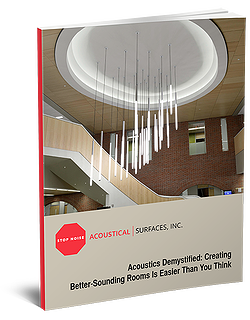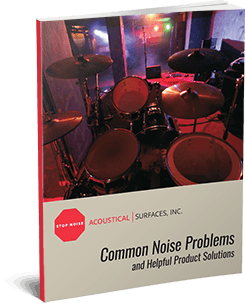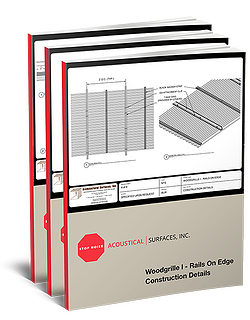LEED-certified commercial buildings – a green light for successful business
Design and architecture are constantly evolving artforms. Building styles change as tastes change. They also change as new materials become available. We make adjustments as we learn about unforeseen shortcomings in designs of the past. These days, there are things like building codes and certifications meant to prove that today’s designers and builders are following best practices. One of the most popular green building certifications in the world today is a LEED certification. Let’s take a look at why it’s such a popular option for business owners and property developers alike.
What is LEED Certification?
LEED stands for Leadership in Energy and Environmental Design, and it provides third-party verification of sustainable buildings. It was created by the US Green Building Council (USGBC), a private, membership-based non-profit organization that promotes sustainability in the design, construction, and operation of buildings. There are five main categories that LEED rating systems fall into. Those categories are: Building design and construction, interior design and construction, operations and maintenance, homes, and neighborhood development.

When LEED first started gaining traction, some builders were concerned with the possibility of added costs associated with green building materials, but as those costs have come down, the cost of a green building, when compared to conventional construction, have become very comparable. These days, LEED Certification is seen as a worthwhile investment in time and money. The benefits of going green can recoup the cost of certification in no time.
There are a number of ways a project earns points in the certification process, and the number of points determines the rating level. You can download the LEED certification checklist from the USGBC.org website. It shows you how you can earn points toward certifying your building, and it is a good roadmap when planning new structures.
LEED Certified Commercial Buildings come in four levels of certification:
- Certified: 40-49 points
- Silver: 50-59 points
- Gold: 60-79 points
- Platinum: 80 points and above
Why Choose LEED Certified Buildings?
Our changing world presents a multitude of reasons to get your building LEED Certified. Not only do green buildings save money in the form of energy savings and lower costs for utilities, but they can allow you to charge more when renting the space out. Emphasis on energy conservation and the environment now fall near the top of the priority list for an ever-growing number of people. If you’re wondering how operating out of a certified green building will help your business, there are a number of benefits to consider.
First, sustainable buildings offer a boost to your public image. LEED Platinum buildings are among the greenest in the world, and that certification is a selling point in itself. In fact, achieving any level of certification will show how much you care about your environment and the people who live in it. Studies have shown that consumers are nearly twice as likely to choose a green option when one is presented to them. This means choosing a building that can actually lower your operating costs, may, in fact, be the tipping point between you and your competitors!

Sustainable buildings can save you money. We’ve already talked a little bit about how they can earn you more money, but they can also save you money in a number of ways. Green buildings are generally more energy-efficient than conventional buildings and can save you money on your utilities. Lower operating costs give you flexibility when making decisions that affect the quality of life for your employees and clients. If your building is able to recycle rainwater to keep your green spaces growing, you can put the money you save on your water bill to better use somewhere else. In addition to that, maintaining green spaces itself drives business and can qualify you for tax credits, depending on your location. Some companies can qualify for tax breaks just for leasing space in a green building.
The comfort of the occupants of your building should be another point of focus. Using sustainable design principles and incorporating things like acoustical elements improve building tenant health, safety, functionality, and comfort. It is possible to achieve acoustic performance credits toward your LEED Certification for cutting down on the noise pollution in your building. Acoustic panels and treatments are something that are often tackled in the planning phase, but they also fall into an area where business owners can retrofit their existing location to meet the requirements and earn points.

LEED Certification Cost
LEED certification requires that your building meets certain criteria, which means there are hard and soft costs that must be absorbed, but many of these are offset by increased occupancy and price points. Certified buildings enjoy improved recruitment and retention, meaning you are more likely to bring in top talent and keep them happy. LEED registration and certification fees present another cost. The project registration fee is $1200, and the certification fees are in the range of $2,250 to $22,500 ($1,750 to $17,500 for members), and is determined by project size.
The bottom line, if you can obtain LEED Certification, it can be a great asset. There is no question that people increasingly love all things green, and that green buildings are a fantastic choice for the environment. Make the leap and do something good for your business as well as the people who are spending a third of their lives in your building. The small things do matter.




2 Comments
Ruel C.
Hi Acoustical Surfaces, Inc.
Do you have LEEDS or Indoor Air Quality Certifications on the FABRISORB Product?
Acoustical Surfaces
We do not have an indoor air quality certification (VOC Emissions) for Fabrisorb. It may apply for LEED based on its recycled content. If they you need recycled content information, please email [email protected] and we can work on getting that for you.